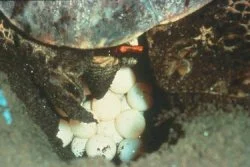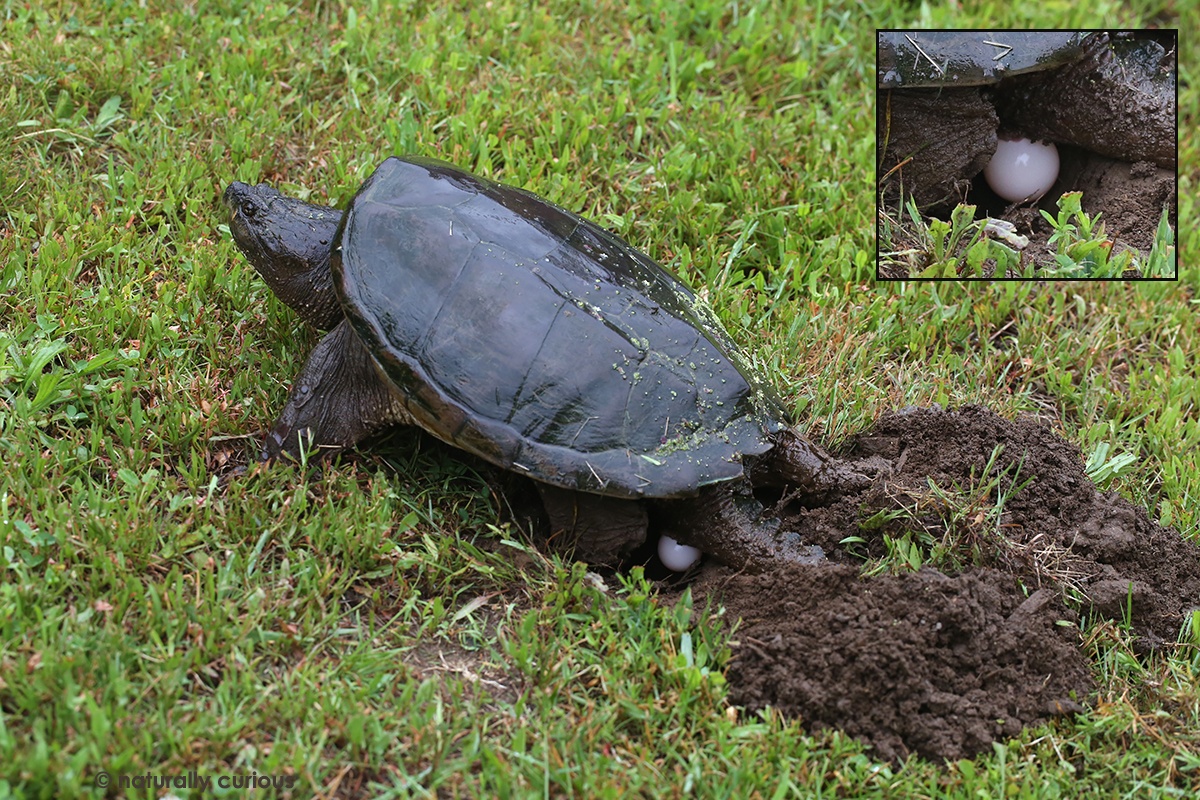Why Do Turtles Leave Their Eggs

Turtles are a shelled reptile that can be found in nearly every corner of the globe. Out of the seven different species of turtles, six of them lay eggs on land. The seventh species, known as the leatherback turtle, lays its eggs in the water.
All turtles have one thing in common: they leave their eggs soon after they are laid. Scientists believe there are several reasons for this behavior. One reason is that if the mother turtle stayed with her eggs, she would likely crush them with her weight.
Another reason is that predators would have an easier time finding and eating the eggs if the mother turtle stayed close by. Additionally, by leaving her eggs unattended, the mother turtle ensures that at least some of her offspring will survive to adulthood.
Turtles are one of the oldest and most enduring animals on the planet. For many people, they are a symbol of good luck and long life. But why do these creatures choose to leave their eggs unprotected on the beach?
There are a few reasons for this behavior. First, turtles have evolved to lay their eggs in areas where there are few or no predators. This means that the chances of their young surviving to adulthood are much higher.
Second, by leaving their eggs unguarded, turtles increase the chances that at least some of their offspring will hatch and survive. In other words, it’s a numbers game. The more eggs a turtle lays, the better its chances of passing on its genes to future generations.
Finally, it’s worth noting that turtles aren’t exactly helpless when it comes to protecting their young. The mother turtle will often dig a pit in the sand near her nesting site and bury her eggs in it. This gives them some measure of protection from both predators and the elements.
So why do turtles leave their eggs unprotected? It’s a risky strategy, but one that increases the chances that at least some of their offspring will make it to adulthood and continue the cycle of life.
Surviving Sea Turtles | Untamed
Do Land. Turtles Leave Their Eggs
When it comes time to lay their eggs, female turtles will leave the safety of the water and head for land. They will dig a hole in the sand with their back legs and then deposit their eggs inside. Once all the eggs are safely in the nest, the turtle will cover them up with more sand and then return to the water.
The entire process can take several hours.The reason turtles build their nests on land is because it is warmer there than in the water. This is important because it helps to ensure that the eggs will hatch successfully.
If they were laid in the water, they would be subject to colder temperatures and could die before they had a chance to hatch.Once the eggs have been incubating in the warm sand for several weeks, they will begin to hatch. The baby turtles will make their way out of the nest and head towards the water.
This is an amazing sight to behold, but it’s also dangerous for these little creatures. Many of them will never make it to safety as predators await them at every turn.
How Many Eggs Do Turtles Lay
Turtles are reptiles of the order Testudines. They lay eggs on land in nests dug in sand or soil. The number of eggs a turtle lays depends on the species, but can range from one to over 100.
Some turtles, like the leatherback sea turtle, even lay their eggs in the water.Most turtles take about two months to incubate their eggs before they hatch. The temperature during incubation determines whether the offspring will be male or female.
Warmer temperatures produce more females, while cooler temperatures result in more males.After hatching, turtles face many dangers including predators, disease, and being hit by cars. Only about one in 1,000 turtles survives to adulthood.
Once they reach maturity, however, they can live for decades; some species have been known to live for over 100 years!
Where Do Turtles Lay Their Eggs
Turtles lay their eggs on land, near the water’s edge. The female turtle will dig a hole in the sand with her back legs and deposit her eggs inside. She will then cover the eggs with sand and return to the water.
The incubation period for turtle eggs is about 60 days. After they hatch, the baby turtles make their way to the water on their own.
Do Box Turtles Leave Their Eggs
As the weather gets warmer, you may start to see more turtles out and about. One type of turtle you might see is the box turtle. Box turtles are land turtles that are native to North America.
These turtles get their name from their ability to close up their shell like a box, which protects them from predators.Box turtles lay eggs in the spring or summer. The female will dig a nest in the ground and lay anywhere from 2-12 eggs.
Once the eggs are laid, the female will cover them back up with dirt and leave them. The eggs will incubate for 60-90 days before they hatch.The baby turtles will then dig their way out of the nest and head off on their own.
They won’t reach full size for 10-15 years though! If you see a box turtle, be sure to leave it alone so it can continue on its journey.

Credit: naturallycuriouswithmaryholland.wordpress.com
Do Turtles Just Leave Their Eggs?
No, turtles do not just leave their eggs. Once a turtle lays its eggs, it will carefully bury them in the sand or dirt. The mother turtle will then return to the ocean and will not see her offspring again.
Why Do Mother Turtles Leave Their Babies?
Mama turtles have a lot on their minds. They must travel to find food, avoid predators, and keep their shells healthy. If they can do all of that and lay eggs too, that’s even better!
But once the babies hatch, Mama turtle’s job is done and it’s time for her to move on.There are several reasons why Mama turtles leave their babies. One is simply that she needs to eat and rest after laying her eggs.
She has used up a lot of energy during this process and needs time to replenish herself. Additionally, if she stayed with her babies, she would likely attract predators who would see the little turtles as an easy meal.Another reason Mama turtle leaves is that she knows her babies are better off on their own.
Once they hatch, they are able to fend for themselves and don’t need her help anymore. In fact, if she stayed around, they might get in each other’s way or compete for food resources. It’s best for everyone if Mama turtle goes off on her own at this point.
Of course, leaving her babies behind isn’t easy for Mama turtle. She has spent a great deal of time and energy caring for them until this point. But ultimately, it is best for both Mama and her babies if she starts anew once they have hatched successfully from their eggs into the world on their own.
Why Do Turtles Cry When They Lay Eggs?
As far as we know, turtles don’t cry when they lay their eggs. Some people believe that the tears shed by a mother turtle are a sign of her sadness and mourning for her offspring, but there’s no evidence to support this claim. It’s more likely that the tears are simply a physiological response to the egg-laying process.
When a turtle lays her eggs, she first digs a hole in the ground with her hind legs. She then uses her front legs to scoop up sand and dirt and cover the eggs. This can be a strenuous process, and it’s not uncommon for mother turtles to shed a few tears during egg-laying.
The tears may also be due to hormonal changes associated with egg-laying. In many animals (including humans), the act of giving birth triggers an release of oxytocin, which is sometimes called the “love hormone” because it promotes bonding between mothers and their newborns. Oxytocin has also been shown to have stress-reducing effects, so it’s possible that it plays a role in helping turtles cope with the physical and emotional demands of egg-laying.
Whatever the reason for turtle tears, one thing is certain: they’re proof of just how amazing and resilient these creatures are. Despite being vulnerable during egg-laying, turtles persevere and continue to thrive in habitats all over the world.
Do Turtles Hide in Their Shells to Protect Their Eggs?
Turtles do not hide in their turtles’ protective shell to protect their eggs. They actually rely on another instinct for safeguarding their offspring. Female turtles instinctively bury their fertilized eggs in the sand, providing a natural incubator. This shields the eggs from predators and harsh environmental conditions, ensuring the survival of the next generation of turtles.
Do Turtles Come Back to the Same Place to Lay Eggs?
Yes, turtles do come back to the same place to lay eggs. This is because they have a strong sense of home and nesting sites. Once they find a good spot, they will return to it year after year.
This helps them to avoid predators and gives their offspring a better chance of survival.
Conclusion
Turtles are one of the oldest and most popular pets in the world. But why do they leave their eggs?There are a few reasons why turtles might abandon their nests.
One reason is that the environment is not ideal for incubation. The temperature might be too hot or cold, there might not be enough moisture, or there could be too much light. Another reason is that the turtle is sick or injured and cannot take care of the eggs.
If you find a turtle nest that has been abandoned, you can try to incubate the eggs yourself. But it’s best to leave them where you found them and let nature take its course.